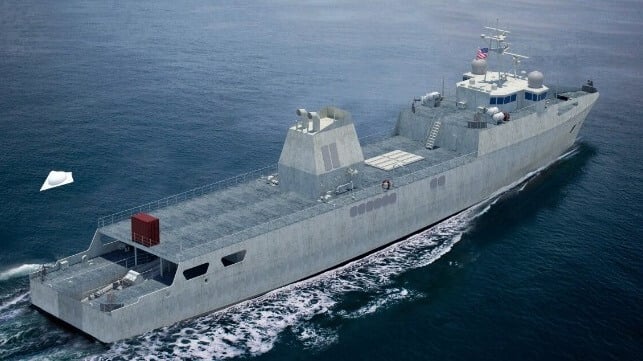Todjaeger
Potstirrer
I could be mistaken, but I was under the impression that once a Tomahawk was launched at a designated target, the onboard guidance system would be responsible for getting the missile to target and not any control system from a launching platform. IIRC there can be some potential for midcourse correction and/or updates via data links, but those are launch platform agnostic.Well the LOCSV is the selected solution to the VLS count problem (For Hobart and Hunter). The RAN, however, does not know how the LOCSV program (effectively a bilateral program led by US) will turn out though. Will it work? will the USGov cancel it even if it works? If LOCSV ends up simply as a long range strike magazine, with no ability to track the missiles it launches, then Hunter will need the ability to control Tomahawk. Given the unknowns exploring the fit of Tomahawk to Hunter seems sensible.
Two other thoughts.
If the RAN is anticipating having a vessel available to provide a contribution to a firing line in the event of a major Pacific war (or a Houthi Red Sea style contingency) then there are only 3 Hobarts to deliver that between now and 2050 or so. If there is no Hobart available (e.g, escorting a LHD or providing cover for Fleet Base East or for an off shore deployment) then maybe they will need to send a Hunter to fulfill that commitment.
Finally, if Hunter could carry Tomahawk then adversaries need to plan for the maximum strike range available to it. The ship seemingly on ASW patrol 2000km off your coast might be just about to launch a first strike on your airbase.
As a matter of practicality, a ship launching Tomahawk cruise missiles would only really be able to track and directly communicate with them if they were in the 'local vicinity' of the launching vessel. One needs to remember that the flight profile of a Tomahawk missile has it flying at low altitude, some 30 m - 50 m above ground level, which means the missile would be below the radar horizon of most launching ships after ~30 km. Given that the range of Block V Tomahawks are believed to be in excess of 1,600 km there really is no way for a ship to directly communicate with missiles at such extreme ranges.
From my POV, if Australia was really serious about having the ability to launch sudden 'surprise' strikes at the fixed infrastructure of hostile powers there are potentially much better options than ship-launched RGM-109E Tomahawks. As it stands now, the Hobart-class DDG's can carry and launch them, at the expense of VLS cells which otherwise could be loaded with ESSM or members of the Standard Missile family to provide air defence. Further, this does not appear likely to change prior to ~2034, which would put the Tomahawk design even older/longer in service at that point. The potential battlespace of the mid-2030's might very well be one where long-range Tomahawk LACM strikes targeting a peer (or possibly beyond peer) level power are no longer realistically viable/effective.
A concern of mine is that Australia (and elements of the US and UK for that matter) are working to build a combat capability in the mid-2030's that is appropriate for conditions now. If one considers the likelihood of a hostile nation adopting and implementing systems comparable to those which NATO and major allies have used for decades, specifically integrating broad area surveillance systems like AEW platforms and effective datalink systems and networks, then the relevance of something like Tomahawk might not be all that much by the time the Hunter-class frigates enter service.

